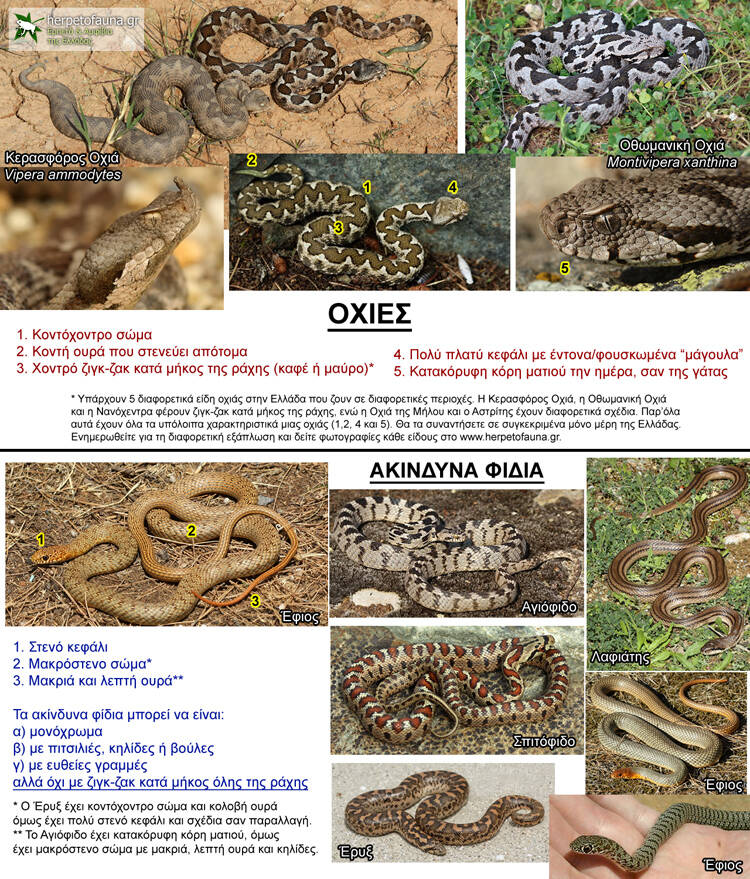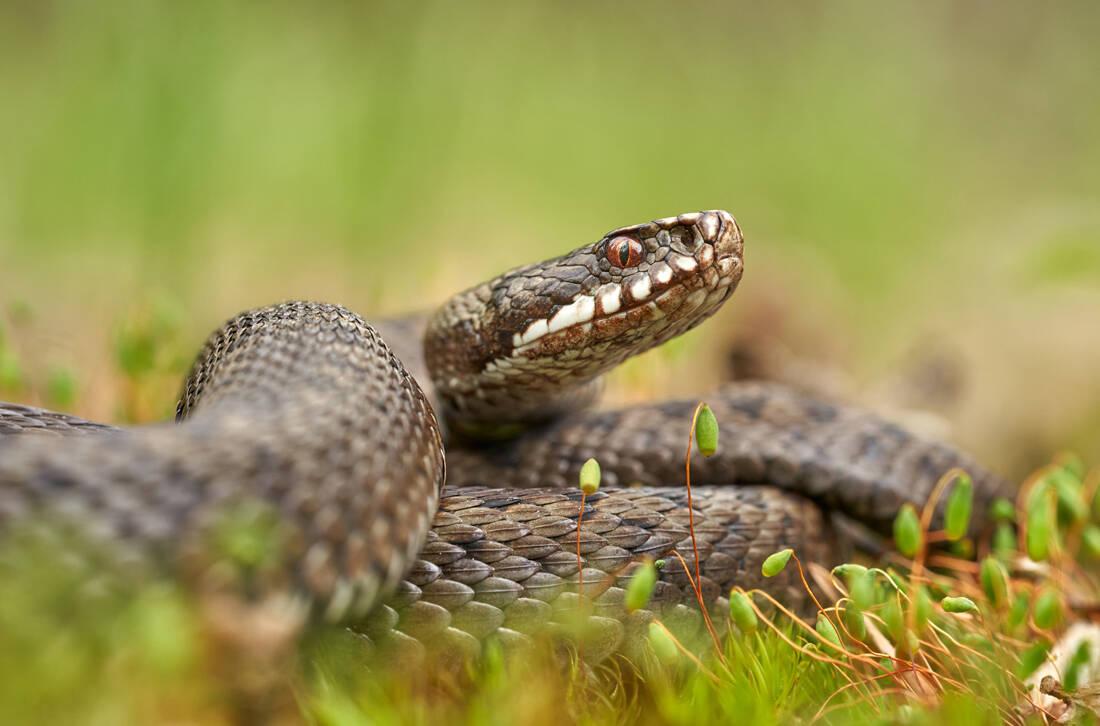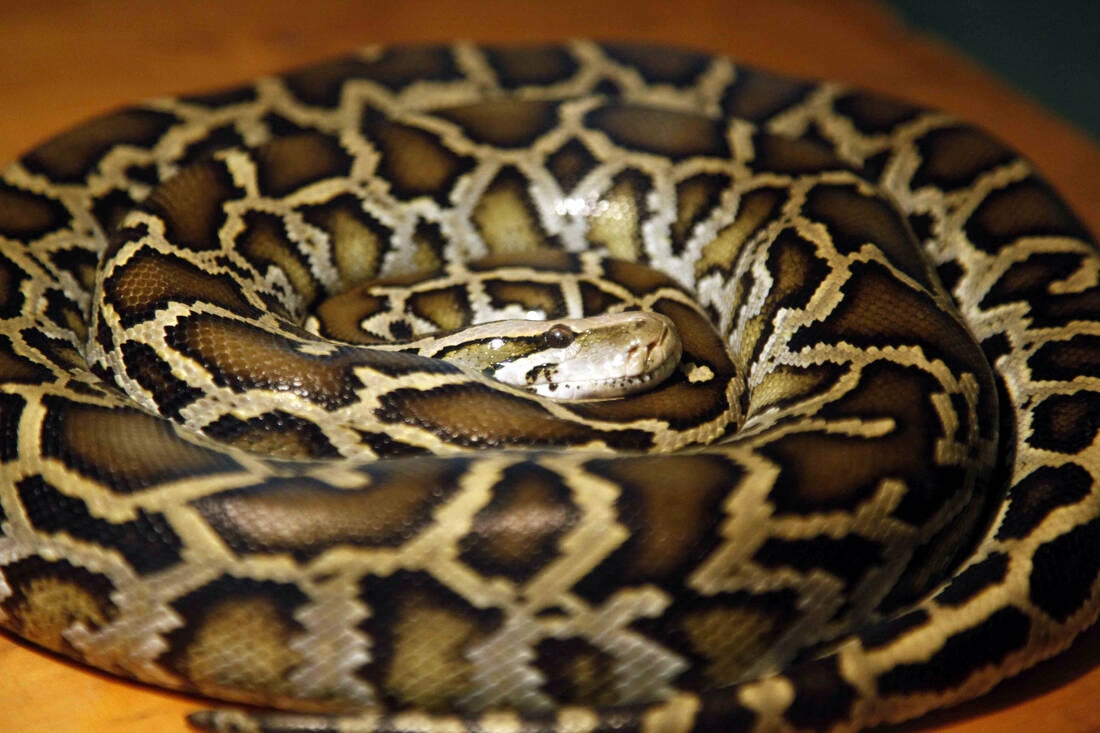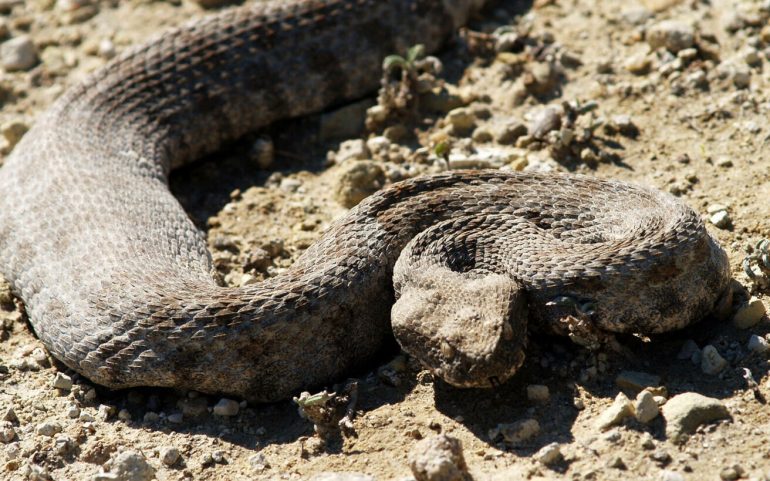Their reappearance for this year summer from the first weeks of May began to make snakes in our country, causing fear among citizens. Their "awakening" is noticed mainly by those who live in outdoors, but also residents of some urban areas, where there have already been reports of snakes in the open and even in. cars.
Maybe the lockdown imposed because of it coronavirus to affect the "awakening" of reptiles? What should we do if we are confronted with one or more snakes? We can avoid it pinch their; Are they all dangerous or are there also harmless species? The answers to these and many other questions are given by speaking to newsbeast.gr the reptologist and member of the Hellenic Reptological Society, Petros Lymperakis.
As he points out, there has been a lot of concern about the increase in snake incidents lately and there are reports that their appearance was affected by the non-movement of citizens due to lockdown. But such a thing as he clarified is almost impossible as the snakes and more generally reptiles affected by agricultural work. "The farm work continued normally during the lockdown period, so we can not say that the snakes found the opportunity to 'move' more comfortably," he explains, stressing that their appearance was mainly affected by the temperature rise, which became quite abrupt.

"Every year at such a time, mainly from April to May, snakes are very active in search of food and for breeding purposes. This way one can see them even in urban areas "notes the Greek herpetologist.
- Are there dangerous and harmless reptiles in our country?
About 70 species of reptiles live in Greece. Of these, only 7 carry poison and they are all species of snakes. Five of them belong to the Echidnidae family (vipers) and are tube-carved with relatively strong venom. The rest belong to the family of Kolovrida and are backwards with weak poison, that is, harmless to humans. In our country there are 23 different species of snakes. The snakes of the Echidnidae family are not all together in the same place but have a different distribution throughout the Greek territory and are the following: viper - vipera ammodytes, ottoman viper - montivipera xanthina, Milos viper - macrovipera schweizeri, astritis - vipera berus and the Pindos viper (dwarf - vipera graeca). The poisonous Kouloubrides are only the rot - malpolon insignitus and the snake - telescopus fallax. You can find a lot of information at hespetofauna.gr, where there is also the following mini guide for identifying dangerous and non-dangerous snakes.

- What should we do if we see a snake?
In most cases we will not see it in front of us because they also try to avoid us. They feel our footsteps and do not want meetings as they are afraid of us. If it happens and we see it, because the average person is not able to tell if it is dangerous or harmless, it would be good to put it aside. If we leave there is no way he will chase us. If we push him somewhere and he realizes that he can not leave his fear, he will attack us. There are of course misfortunes. We can put our hand somewhere we do not know it is a snake and it bites us. About 10 bites from dangerous snakes, mainly vipers, are recorded each year.
- If it bites us? How should we behave?
We need to know that the sting is not fatal. If we are bitten by a snake we do not do anything we have heard, for example we do not try to tear the skin and suck the venom from the wound and spit it out. We rush directly to the hospital where we will be given the antidote. We must not panic. Remove any object or fabric that may tighten at the point where the sting was made. We also keep the area as immobile as possible as with the immobility of the bitten member we delay the development of symptoms. We do not tie the bitten member. Blood circulation should not be impeded as we risk developing blood clots or even limb necrosis. The venom spreads mainly through the lymph so the tight bandage that would stop the blood circulation is useless.

- Can we do something to keep snakes away from our home especially if it is outdoors?
There is a lot to be heard about this question. For example, many say that we can throw sulfur. The sulfur but it has a very annoying smell, it is quite toxic and without any proven effect on repelling snakes. It is also said that oil or naphthalene, which are also toxic and dangerous substances, can cause environmental damage and harm to the person who uses them. What we need to think about is not how to repel snakes but what we need to do to keep them away. Snakes look for an environment as cool as a hiding place. So we take the big stones out of our garden and the wood. Cut the tall grasses, prune the bases of the dense bushes and block all the slits and holes that can be used as their shelter.
Also so as not to attract them in general rodents (mice, rats) but also arthropods (crickets, locusts, etc.) we avoid leaving exposed food and we avoid planting fruit trees that can be their food. We also use ecological repellents so as not to harm our environment and health.

- What is the biggest myth about snakes?
There are many. They have like livestock the worst reputation while their appearance reinforces the bad views and the fear that arises when one encounters them. We believe that snakes will attack us but we are wrong. They can not attack anything that is not food for them, let alone the person they fear. Their first reaction is to move away from what they consider their predator. They are very useful animals and play a very important role in the balance of the ecosystem.
